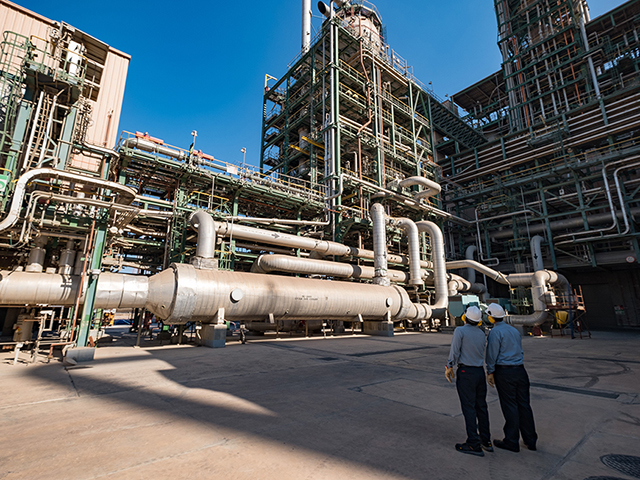MATERIALITY
Materiality analyses allow SABIC to determine how to direct our resources toward the most pressing issues for our company and stakeholders.
Since conducting our first materiality analysis in 2011, we refresh the analysis every 3-4 years along with a new stakeholder analysis. As part of these analyses, we examine our internal and external stakeholder needs, major trends, benchmarks, and relative business impacts to determine the most relevant priorities for SABIC. Taking into consideration all three dimensions of sustainability – economic, social, and environmental – our materiality results reflect the importance of climate change and validates our focus on this global challenge.
The materiality topics that anchor this report were generated in 2018, and reviewed annually as part of the report-preparation process. A new materiality analysis and stakeholder analysis was initiated in 2022 and will be completed in 2023. A critical component of this materiality analysis is the concept of double materiality, and key references points are the EU Taxonomy, the GRI standards, and the forthcoming ISSB standards as SABIC plans to move to a single integrated annual report in the coming years. SABIC will use this renewed materiality assessment as a foundation for integrating material aspects of sustainability into our business strategy and processes.

Our materiality results reflect the importance of climate change and validates our focus on this global challenge.
STEP-CHANGE TARGETS
Resource Efficiency
| Dimensions |
|
Target | Base year | Target year |
|---|---|---|---|---|
| Energy intensity GJ/MT sales | 25% reduction by 2025 | 2010 | 2025 | |
| Material Loss intensity MT Material loss/MT sales | 50% reduction by 2025 | 2010 | 2025 | |
| Absolute Waste Reduction | % gap to below 2010 by 2025 | 2010 | 2025 | |
| Flaring | 65% reduction | 2010 | 2025 | |
| Water Intensity m3/MT sales | 25% reduction | 2010 | 2025 |
Climate
| Dimensions |
|
Target | Base year | Target year |
|---|---|---|---|---|
| Green House Gas Intensity MTCO2e/MT sales | 25% reduction by 2025 | 2010 | 2025 | |
| Renewable energy | 4 GW Installed Capacity (12 GW by 2030) | 2025 |
Circular Economy
| Dimensions |
|
Target | Base year | Target year |
|---|---|---|---|---|
| Sales materials in kt | 1,000 kt TRUCIRCLE™ materials (recycled and renewable) per annum | 2030 |
EHSS/Product Stewardship
| Dimensions |
|
Target | Base year | Target year |
|---|---|---|---|---|
| Fatalities | Zero | Yearly |
Governance & Integrity
| Dimensions |
|
Target | Base year | Target year |
|---|---|---|---|---|
| Employee integrity assessment score | 50% improvement against benchmark | 2010 | 2025 |
